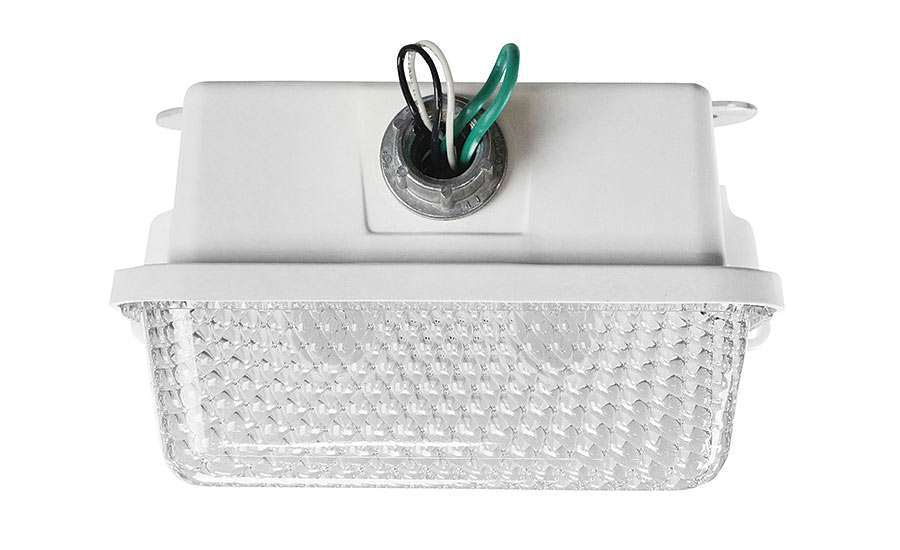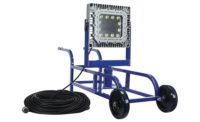Extend lighting lifespan in harsh environments

Corrosion-resistant lights and cords are designed for extreme work environments where corrosive substances threaten the lifespan and efficiency of fixtures. According to a 1998 U.S. Federal Highway Administration study, U.S.-based companies and organizations spend over $276 billion (or 3.1 percent of the nation’s gross domestic product [GDP]) annually on the prevention, monitoring and maintenance of corrosion-related issues.
Sectors that are greatly affected by corrosion include infrastructure, $22.6 billion; production and manufacturing, $17.6 billion; transportation, $29.7 billion; utilities, $47.9 billion; and government, $20.1 billion. In Japan, the figure is set at 1.2 percent of the country’s GDP; while other countries, such as the United Kingdom, Kuwait and Australia range between 1 to 5 percent. Factors contributing to the overwhelming rates include aging, increase in maintenance and replacement costs, and tight quality assurance standards.
Corrosion-resistant lighting benefits
Industries that benefit from corrosion-resistant lights include the following: marine, oil and gas, mining, manufacturing, trucking and military. In the marine sector, such products help prevent the onset of salt-based corrosion from seawater. To achieve this type of protection, corrosion-resistant units are reinforced with special materials that combat corrosion, including stable metals, specialty paints, coatings, gaskets and plastic cord rings. A common stable metal used for such equipment is stainless steel. Other metals, including titanium and aluminum, offer relatively the same type of film protection. Aluminum is effective in preventing rust against saltwater. However, it is prone to pitting and may develop a dull finish during long periods of exposure. Plastics are also effective against corrosion, but the material is prone to warping and degradation under UV light and heat. UV resistant plastics may offer long-term protection against such elements, but only under specific exposure thresholds.
Galvanic corrosion and salt
The main culprit for corrosion in marine environments is salt. This is because salt is hygroscopic in nature, which allows it to create optimal conditions for corrosion, as it attracts water to unprotected surfaces. Galvanic corrosion, or bimetallic corrosion, is especially persistent in marine settings. The presence of seawater boosts the breakdown of the metal that is the anode, while the other metal (the cathode) is protected. An example of this is the combination of aluminum and carbon steel in seawater. In this case, aluminum has a tendency to corrode quickly, as the steel surface stays protected.
Best practices for preventing galvanic corrosion includes the following measures:
• Choose materials with similar corrosion potentials.
• Apply anti-corrosive coating to both surfaces.
• Separate both materials using a spacer.
• Disrupt the electrical connection between the two metals using insulation or a barrier.
Compliance is essential
In Canada, the application of corrosion-resistant lights may help professionals comply with National Safety Code Standard 11 Part B, which indicates that a fixture may be replaced or rejected if “25 percent or more LEDs of any one lamp assembly are non-functional.” Using protected, corrosion-resistant lighting units while adhering to such guidelines is an effective way to ensure compliance and avoid penalties.
To meet the standards of work in wet environments, the National Electrical Code (NEC) UL defines the requirements for such locations:
• NEC (Wet Locations): Installations underground or in concrete slabs or masonry in direct contact with the earth; in locations subject to saturation with water or other liquids, such as vehicle washing areas; and in unprotected locations exposed to weather.
• NEC Article #410-4 Luminaires (Fixtures) in Specific Locations:
• Wet and Damp Locations- Luminaires (fixtures) installed in wet or damp locations shall be installed so that water cannot enter or accumulate in wiring compartments, lampholders, or other electrical parts. All luminaires (fixtures) installed in wet locations shall be marked, “Suitable for Wet Locations”. All luminaires (fixtures) installed in damp locations shall be marked, “Suitable for Damp Locations.”
• Corrosive Locations- Luminaires (fixtures) installed in corrosive locations shall be of a type suitable for such locations.
• UL (Wet Locations, from UL Standard Publication 1598): A location in which water or other liquid can drip, splash, or flow on or against electrical equipment. A wet location luminaire shall be constructed to prevent the accumulation of water on live parts, electrical components, or conductors not identified for use in contact with water.
Corrosion-resistant cords
Corrosion-resistant cords support corrosion-resistant lights by providing consistent electrical power. Such accessories are well protected and are designed to withstand exposure from corrosive agents. Plus, such equipment may also have the following third-party designations: UL, CSA, MSHA and OSHA. It is important to consider that a cord’s ratings may not extend to protect the plugs and connectors of the fixture.
Signs of cord corrosion in marine environments suggest two of the following activities: persistent saltwater exposure and/or the fixture is drawing too much power from the cord. In the latter situation, overdrawing current from a corroded cord may cause it to become more resistant to current flow. This usually results in higher current requirements to power the unit. To avoid such instances, it is vital to perform regular checkups and replace worn-out accessories that display signs of corrosion.
Looking for a reprint of this article?
From high-res PDFs to custom plaques, order your copy today!



